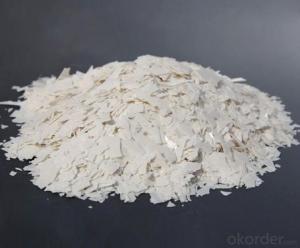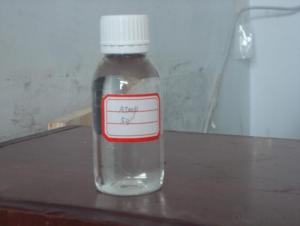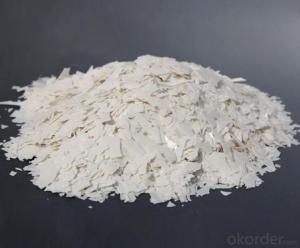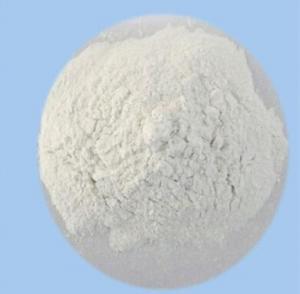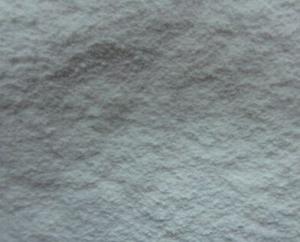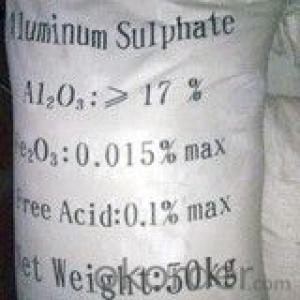PVC Stabalizer for Plastic Panels,Profiles,Pipes
- Loading Port:
- Qingdao
- Payment Terms:
- TT or LC
- Min Order Qty:
- 3000 kg
- Supply Capability:
- 100000 kg/month
OKorder Service Pledge
OKorder Financial Service
You Might Also Like
1. Structure of PVC Stabalizer
Classification: Chemical Auxiliary Agent
Other Names: one pack pvc stabilizer
Purity: 99.9%
Place of Origin: Shandong, China (Mainland)
Type: PVC Stabilizer
Usage: Plastic Auxiliary Agents
Brand Name: HaoMing
Model Number: Pipe Grade
2. Main Features of the Calcium Pvc Compound Stabilizer
Product
PVC stabilizer, Also called One pack pvc stabilizer
Description
It is lead based compound stabilizer containing internal and external lubricants.
It is used for producing pvc pipes. It has excellent processing performance
for calendaring molding. It will not effect the flatness, bright and clean,
even thickness of the product when the filling material has a fluctuation.
Specification
1. Appearance: white flake
2. Lead oxide content,%: 30-40
3. Melting Point:70min
4. Moisture,%:0.5max
Addition quantity
According to the different equipments of calendars, suggests add 3-4 phr in each 100 phr PVC resin.
3. Images Of PVC Stabalizer
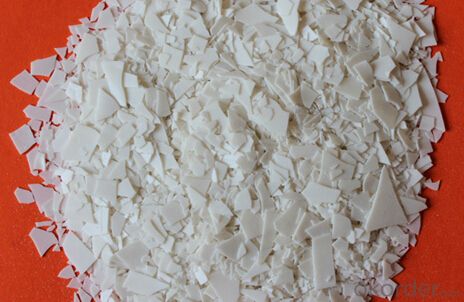
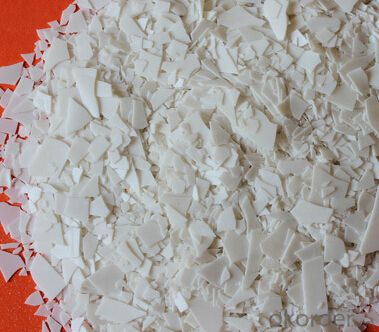
4. PVC Stabalizer Specifications
1. Appearance: white flake
2. Lead oxide content,%: 30-40
3. Melting Point:70min
4. Moisture,%:0.5max
5. FAQ of Calcium Pvc Stabilizer
1.Delivery date:15-30days
2.Proper for plastic pipe and profile stablizer
3.Payment:30% in advance,70% against BL copy
- Q: Are biological enzymes harmful to humans?
- Recently, people are increasingly interested in the use of enzymes in cosmetics, not only from a technical point of view, but also from the market prospects and consumer awareness of these seemingly effective raw materials. Enzymes have been used in laundry detergent for more than 20 years and are linked to long-term performance with the ability to provide and enhance strong stain removal capabilities. According to some speculation, their positive response in the market may be interpreted as satisfying the aging population, the pursuit of younger needs to enhance the performance of cosmetics. The natural shedding process of the skin is controlled by the enzymatic reaction, and the specific enzyme dissolves the cell desmosomes that release the dead epidermal cells. These enzymes are produced in dead keratinocytes. Their active sites are phagocytosed with mercapto groups, and cleavage of peptide bonds in a manner similar to that of thio-glycolic acid and mercaptoalanine (plus derivatives) when the hair is broken. Use these types of enzymes and it
- Q: Can a catalyst decrease the rate of a chemical reaction? Please give an example if yes.
- A catalyst is something that quickens the fee of reaction without getting used up itself. They many times try this by skill of lowering the activation skill, which additionally brings the optimal temperature down. So, to place it only, it relatively is B.
- Q: What is catalyst in Science?
- Like everyone told you, catalysts increases the rate of reaction without being consumed. An easy example to think of is mixing natural gas with air --(CH4 + O2). The minute you mix them they are reacting , releasing CO2 as a byproduct and H2O. But they are reacting very slow. But take a match to that slow reaction and it instantaneously reacts with an explosion. In this case the match was the catalyst. It sped up the reaction without adding anything to the reaction or being consumed
- Q: Cl + O3 ---> ClO + O2O + ClO ---> Cl + O2= O + O3 ----> 2O2What is the catalyst? The intermediate?How do you know which is which? If the rate law is rate=k [O3] [Cl]determine:a) the overall order.b) unit for k.c) the rate determining step, justify your answer.
- Cl is the catalyst. ClO the intermediate. The catalyst is the component which does not change in overall reaction. He forms some intermediate component(s) with the reactants. In the later reaction steps the intermediate(s) react forming the catalyst in its original state. (a) The overall order is the sum of the orders with respect to the components: n = 1 +1 = 2 (b) the unit of the rate of reaction is r [=] mol/ (Ls) (more general mol per unit time and volume) compare dimensions mol / (Ls) [=] k · mo/L · mol/L =k [=] L/(s mol) (more general unit volume per unit time and mole) (c) First reaction For elementary reaction steps the order of the reaction rate with respect to a reactant is equal to stoichiometric coefficient. Hence the rate of first reaction is: r? = k?·[Cl]·[O?] Overall rate is given by the rate determining step, while other reaction steps are in equilibrium: r = r? = k?·[Cl]·[O?] If second reaction is the rate determine step r? = k?·[O]·[ClO] while reaction 1 is at equilibrium K? = ( [ClO]·[O?] ) / ( [Cl]·[O?] ) =[ClO] = K?·( [Cl]·[O?] ) / [O?] the overall rate would be: r = r? = k?·[O]·[ClO] = K?·k?·[O]·[Cl]·[O?] / [O?] = k·[O]·[Cl]·[O?] / [O?] That doesn't match the observed rate law
- Q: What is the catalyst in the end?
- You said the chemical catalyst or Ati graphics card catalyst? If the above is enough to explain the above, if it is the latter, that is, the meaning of the graphics card, Ati's graphics drive like a catalyst
- Q: Seems intuitive that it wouldn't, but I dunno the qualitative difference between activation energy & Gibbs free energy. I'M TOO LAZY TO GOOGLE I GOTS STUFF TO DO
- A catalyst can change the activation energy not the Gibbs energy. The Gibbs energy is the energy difference between the initial state and final state. A catalyst cannot change that. Imagine you are driving from school to home. How you drive do not change the height difference between the school and your home. However, a catalyst can change your path which can change the routine you drive from school to home. So if there is a hill in between your school and you home, you have the choice to drive through it or drive around. Here is a picture: upload.wikimedia.org/wikipedia/co... A catalyst can change the height of the barrier, but cannot alter the initial or final state.
- Q: and what type of macromolecule are they made of? thanks!
- Enzymes okorder /...
- Q: what is a catalyst?
- A catalyst helps make a reaction go forward faster or slower but a catalyst is not consumed by the reaction itself. The catalyst may participate in multiple chemical transformations. Catalysts that speed the reaction are called positive catalysts. Catalysts that slow down the reaction are called negative catalysts or inhibitors. Substances that increase the activity of catalysts are called promoters and substances that deactivate catalysts are called catalytic poisons. For instance, in the reduction of ethyne to ethene, the catalyst is palladium (Pd) partly poisoned with lead(II) acetate (Pb(CH3COO)2). Without the deactivation of the catalyst, the ethene produced will be further reduced to ethane
- Q: Brief introduction of enzyme as biocatalyst and general chemical catalyst and its personality
- can only change the rate of chemical reaction, do not change the equilibrium point of the chemical reaction, the enzyme itself does not change before and after the chemical reaction (3) can reduce the chemical reaction of the activation energy The
- Q: If possible can anyone give me information on the active site, substrates, products, and the energy of activation as part of the answer?Responses greatly appreciated! Thankss! 10pts to best answer!
- To make it simple unlike the dude above me...enzymes (biological catalysts) lower the activation energy, which speeds up the reaction. EVERY reaction needs a little boost of energy--the activation energy--and enzymes lower that.
Send your message to us
PVC Stabalizer for Plastic Panels,Profiles,Pipes
- Loading Port:
- Qingdao
- Payment Terms:
- TT or LC
- Min Order Qty:
- 3000 kg
- Supply Capability:
- 100000 kg/month
OKorder Service Pledge
OKorder Financial Service
Similar products
Hot products
Hot Searches
Related keywords
